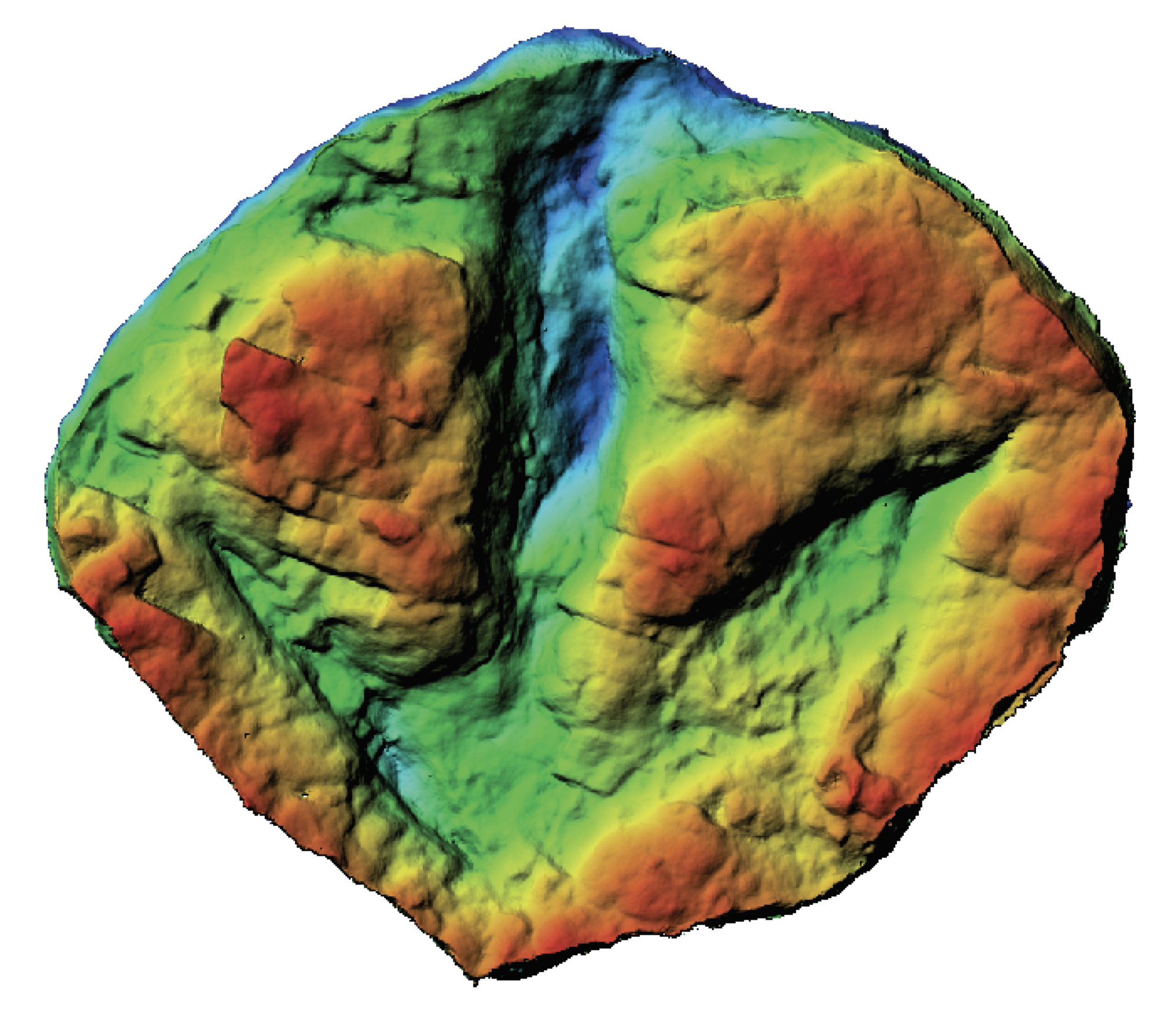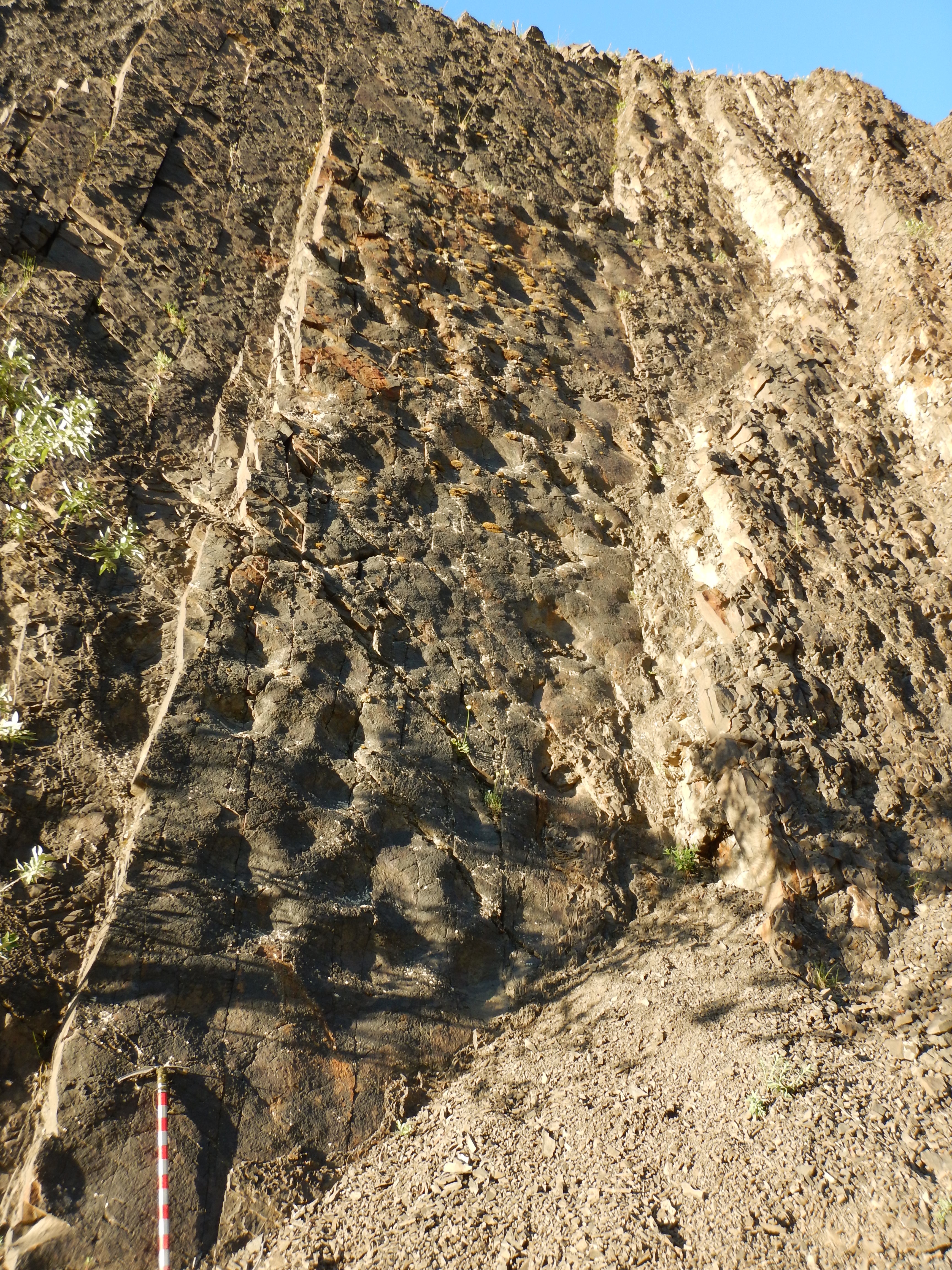Scientists Discover Dinosaur ‘Coliseum’ In Alaska’s Denali National Park
5:33 minutes

Researchers recently discovered a rocky outcrop at Denali National Park in Alaska covered in dinosaur tracks, which they dubbed the “Coliseum.” It’s the largest dinosaur track site ever found in Alaska.
The area has thousands of prints from generations of dinosaurs living about 70 million years ago, including: duck-billed dinosaurs, horned dinosaurs, raptors, tyrannosaurs.
Flora Lichtman talks with Dustin Stewart, former graduate student at the University of Alaska Fairbanks and paleontologist for the environmental consulting firm Stantec, based in Denver, Colorado, about this dino hotspot.

Dustin Stewart is a former graduate student at the University of Alaska – Fairbanks and a paleontologist at Stantec, in Denver, Colorado.
FLORA LICHTMAN: We’re continuing our journey back in time with a visit to a one-of-a-kind dinosaur stomping ground. Researchers recently discovered a rocky outcrop at Denali National Park in Alaska covered in dinosaur tracks. They’ve dubbed it the Coliseum. It’s the largest dinosaur tracksite ever found in the state.
The area has thousands of dino prints from duck-billed dinosaurs, horned dinosaurs, raptors, Tyrannosaurs, living about 70 million years ago. Joining me now to talk more about this dino hotspot is my guest, Dustin Stewart, former graduate student at the University of Alaska Fairbanks. He’s currently a paleontologist for the environmental consulting firm Stantec based in Denver, Colorado. Dustin, welcome to Science Friday.
DUSTIN STEWART: Hi. Thank you for having me.
FLORA LICHTMAN: How did you find this treasure trove of dino tracks?
DUSTIN STEWART: So it actually had a quite a long story. In the summer of 2015, a crew went out there, and they noted that there was a large trackway, which was from a single dinosaur that walked through some mud, and they knew that the area was significant, but they didn’t really know how significant it was until we got out there.
FLORA LICHTMAN: What did you find?
DUSTIN STEWART: We found the entirety of it by kind of going at the right time. It’s a quite a long hike from the road, so we got there late in the afternoon, and we looked at the wall and we were like, yeah, we definitely see some. We didn’t think it was going to be as large as we thought until the sun started setting, and then the angle of the sun kind of perfectly hit this wall, and it just blew up the entire area and exposed thousands of tracks, all within a 10 to 15-minute time span, and we were just shocked. Yeah.
FLORA LICHTMAN: That sounds magical.
DUSTIN STEWART: Yeah, it really was.
FLORA LICHTMAN: Can you ID a species just by its bumpy webbed print?
DUSTIN STEWART: Basically, no. It’s kind of a taboo to put a species name on a track unless you see a series of footprints and then there’s a skeleton at the end of it.
FLORA LICHTMAN: Like its dying steps or something?
DUSTIN STEWART: Exactly. But in every other case, you don’t really want to do that because we don’t want to associate a track with a certain dinosaur and then find out later, oh, hey, there’s this completely new dinosaur that was never discovered before that has a very similar foot. What we do is look at other sites throughout the state of Alaska. There is a particular site, this is the Prince Creek Formation, and that one has a lot of dinosaur bones, and it’s around the same time as where we’re finding our tracks.
FLORA LICHTMAN: So you have some clues.
DUSTIN STEWART: Yeah, exactly. We have some clues.
FLORA LICHTMAN: So what do you suspect was stomping around this area?
DUSTIN STEWART: So we have dinosaurs such as ceratopsians, like the horned dinosaurs, and a lot of duck-billed dinosaurs. And what was special about this place is we were also finding meat eaters along with it. We have larger, not as big as T. rex, but a large Tyrannosaur that was up there.
And we have raptors that we can tell because they have two toes. You can think of their large movie claw that sticks up in the air. That doesn’t make a footprint. So finding those alongside of predators, prey from all these different species was kind of exciting.
FLORA LICHTMAN: So why were so many dinosaurs hanging in this particular area?
DUSTIN STEWART: Part of it is that it’s just such a large area. And then, on top of that, it is over the occurrence of multiple layers, and so these are different events that I couldn’t put a time frame on, but it could be seasonal, or yearly, or decade-long flooding events that create these environments that are good for producing dinosaur tracks. The go-to theory is they are all attracted by something, and the water, the very fluvial system that is there, directs us to thinking, oh, this might be a place where they’re converging to get some water.
FLORA LICHTMAN: So it’s a watering hole for dinosaurs and then maybe also a buffet for these carnivorous dinosaurs.
DUSTIN STEWART: Exactly, yes.
FLORA LICHTMAN: Wow. How unusual is a find like this?
DUSTIN STEWART: This is kind of a once-in-a-lifetime. And, at least for me, ha-ha, this was very clearly the largest tracksite that we know of so far in Alaska. And so we still have a lot of searching to do.
FLORA LICHTMAN: Wow. Well, congratulations, Dustin, on a once-in-a-lifetime dinosaur find. I mean, how many people can say that?
DUSTIN STEWART: Yeah, it was a dream come true. I had a fantastic time out there.
FLORA LICHTMAN: That’s all the time we have for now. I’d like to thank my guest, Dustin Stewart, former graduate student at the University of Alaska Fairbanks. He’s currently a paleontologist for the environmental consulting firm Stantec based in Denver, Colorado.
Copyright © 2023 Science Friday Initiative. All rights reserved. Science Friday transcripts are produced on a tight deadline by 3Play Media. Fidelity to the original aired/published audio or video file might vary, and text might be updated or amended in the future. For the authoritative record of Science Friday’s programming, please visit the original aired/published recording. For terms of use and more information, visit our policies pages at http://www.sciencefriday.com/about/policies/
Shoshannah Buxbaum is a producer for Science Friday. She’s particularly drawn to stories about health, psychology, and the environment. She’s a proud New Jersey native and will happily share her opinions on why the state is deserving of a little more love.
Flora Lichtman is a host of Science Friday. In a previous life, she lived on a research ship where apertivi were served on the top deck, hoisted there via pulley by the ship’s chef.